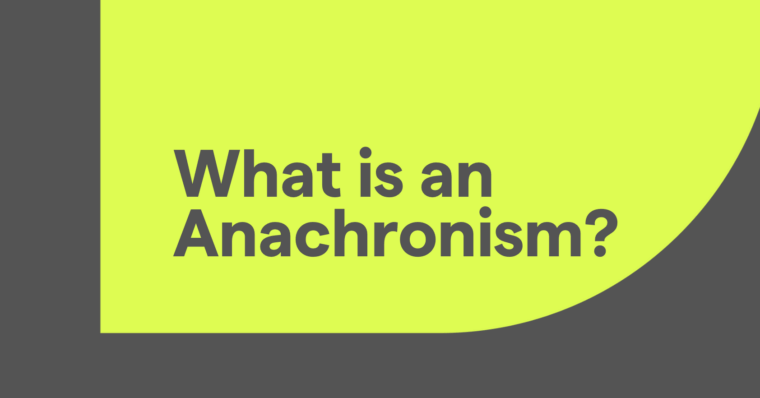
Footnotes are small notations at the bottom of a page that provide additional information or cite the source of a passage in the page’s text. A footnote is marked within the text by a superscript icon, usually an asterisk (*) or number (¹), which corresponds to the matching footnote at the bottom of the page.
Aside from offering supplemental details or commentary, footnotes are essential for citing sources in academic papers—especially in the Chicago style, but also less frequently in MLA and APA formats. Below, we explain how to write footnotes for each style, including citation footnotes, but first, let’s explore this question: “What is a footnote?”
What are footnotes?
If you’ve seen a small number or asterisk written near the top of a line in text, chances are it was a footnote. These superscript figures in text correspond to a small note at the bottom of the page, known as a footnote.
In most written works, footnotes provide two main services in a text:
- Sharing additional information or personal commentary about a passage in the text.
- Displaying a source citation (depending on the style guide).
Footnotes are also used for displaying legal disclaimers or copyright information, especially in advertisements.
The information in footnotes is always supplemental, or “extra.” That means if you have something necessary to say in your writing, put it in the text, not in a footnote.
How to write a footnote
Within the text, place a footnote signal directly after the passage that the footnote relates to. Footnote signals should come after punctuation and at the end of sentences when possible. The only exception is the dash (—), in which case the footnote signal comes before, not after.
At the bottom of the page, that same signal is written, along with the footnote. Footnotes are stacked at the bottom of the page in the order their corresponding signals appear in the text.
If footnotes are rare or inconsistent, they are usually denoted by an asterisk (*) or less commonly the dagger (†). However, if footnotes are frequent, as with academic writing, then sequential numbers are used. If numbered footnotes are excessive, some authors will reset the numbering to one at the beginning of each chapter.
The content of footnotes varies depending on the style guide and what the author wants to say. While we explain how to write footnotes in each style below, sometimes it’s easier to use a citation generator or other citation tools.
For example, our Grammarly auto-citations feature creates a correct citation automatically from a website source. Using our app, simply visit a compatible website—Wikipedia, Frontiers, PLOS One, ScienceDirect, SAGE Journals, PubMed, and more—and click on the “Get Citation” button in the bottom-right corner of the screen. Grammarly will create an accurate citation for the page that’s ready to be used.
What’s the difference between footnotes and endnotes?
Footnotes and endnotes are closely related, so it’s understandable to get them confused. Both provide supplemental information that otherwise doesn’t fit in the text, which sometimes includes citations. The main difference between footnotes and endnotes is where they appear:
- Footnotes appear at the bottom of the page with the passage they relate to.
- Endnotes appear at the end of a chapter or piece of writing, often on a separate page titled “Notes.”
Regardless of their position, both footnotes and endnotes use the same system of superscript symbols placed in the text that correspond to the actual note elsewhere.
Chicago-style footnotes
Of all the style guides, the Chicago format relies on footnotes the most. The Chicago style has two systems for source citation: the notes-bibliography system and the author-date system. The notes-bibliography system, in which the author can choose between footnotes and endnotes, is preferred for topics in the humanities, such as history and literature.
Within the notes-bibliography system, there are two types of footnotes:
- Short form: If there is a full bibliography, only the basic details are included in the footnote.
- #. Author’s last name, Abbreviated Title of Work, page numbers.
- Long form: If there is not a full bibliography, then the first reference to a source must contain a full citation. All subsequent references to the same source can then use the short form.
- #. Author’s first name and last name. Full Title of Work (City of publication: Publisher name, year of publication), page numbers.
Note that, in the footnote, the number is written normally followed by a period. It is not in superscript.
You can search our blog for details on how to cite specific types of sources, such as books, websites, or images.
Chicago footnote examples
In text:
“Frankl recalls the physical trials of his imprisonment, such as working in torn shoes or lacking protection from the weather.¹ It was this torment that led him to his conclusion: ‘suffering ceases to be suffering at the moment it finds a meaning.’”²
Bottom of page:
- Viktor Frankl, Man’s Search for Meaning (Boston: Beacon Press, 2006), 73.
- Frankl, Man’s Search for Meaning, 113.
APA style footnotes
Unlike Chicago style, the APA format prefers parenthetical in-text citations over footnotes. However, there are two cases when footnotes are used:
- Content footnotes: This is supplemental information about a single topic that does not fit coherently in the text.
- Copyright attribution: When a writer uses a “lengthy quotation” or other copyrighted material, such as a stock photograph, a footnote is used for the copyright status (for figures and tables, a footnote is not necessary; the copyright attribution is written in the caption note).
In these rare instances, the footnote is formatted similarly to the Chicago style: Sequential superscript numbers come after the passage, with the corresponding footnote at the bottom of the page. However, in APA format, unlike Chicago, the number in the footnote is superscript and without a period.
APA footnote examples
In text:
[Lengthy passage from the play Rosencrantz & Guildenstern Are Dead]
“ROS.¹ ‘Not by himself . . . Coming this way, I think. (Shiftily.) Should we go?’
GUIL. ‘Why? We’re marked now.’”²
Bottom of page:
¹ The role of Rosencrantz in Rosencrantz & Guildenstern Are Dead was first performed on film by Gary Oldman.
²Copyright 1967 by Tom Stoppard.
MLA style footnotes
The MLA format also prefers parenthetical in-text citations over footnotes. Like the APA format, there are some instances when the works cited page is not enough and more information is required in either footnotes or endnotes.
- Citing a long string of sources: If multiple sources relate to the same passage, it’s better to cite them in a footnote than to use a parenthetical in-text citation.
- Explaining unusual documentation practices: If the source deviates from standard documentation—such as using alternative line numbers for poems—it’s best to mention this in a footnote.
- Noting editions or translations: If there are multiple versions of a text, note which one you are using in a footnote the first time it is referenced.
- Providing content footnotes: Again, this is for supplemental information that doesn’t fit into the page text.
The footnotes are formatted like APA format, where the number in the footnote is superscript and without a period. If the note is written in a complete sentence, place the page numbers in parentheses. If it simply references the source, parentheses aren’t necessary.
MLA footnote examples
In text:
“Free from desire, you realize the mystery.”¹
“Caught in desire, you see only the manifestations.”²
Bottom of page:
¹This passage is alternatively translated as “the secret waits for the insight of eyes unclouded by longing.”
²Citations of Tao Te Ching use Stephen Mitchell’s translation, unless otherwise noted.
Footnote FAQs
What are footnotes?
Footnotes are small notations at the bottom of a page that provide additional information or cite the source of a passage in the page’s text. A footnote is marked in the page text by a superscript icon, usually an asterisk (*) or number (¹), which corresponds to the matching footnote at the bottom of the page.
What should be included in a footnote?
Often, footnotes are simply extra commentary on a passage that doesn’t fit within the text. However, in the case of citations, footnotes must include the relevant source information, such as the author’s last name, title of the work, and page number related to the passage.
What’s the difference between footnotes and endnotes?
Footnotes and endnotes are similar; both are usually marked by superscript numbers in the text that correspond to a note written elsewhere. The main difference, however, is where they appear: Footnotes appear at the bottom of the page with the relevant passage, while endnotes appear at the end of a chapter or work, usually on a separate page titled “Notes.”





